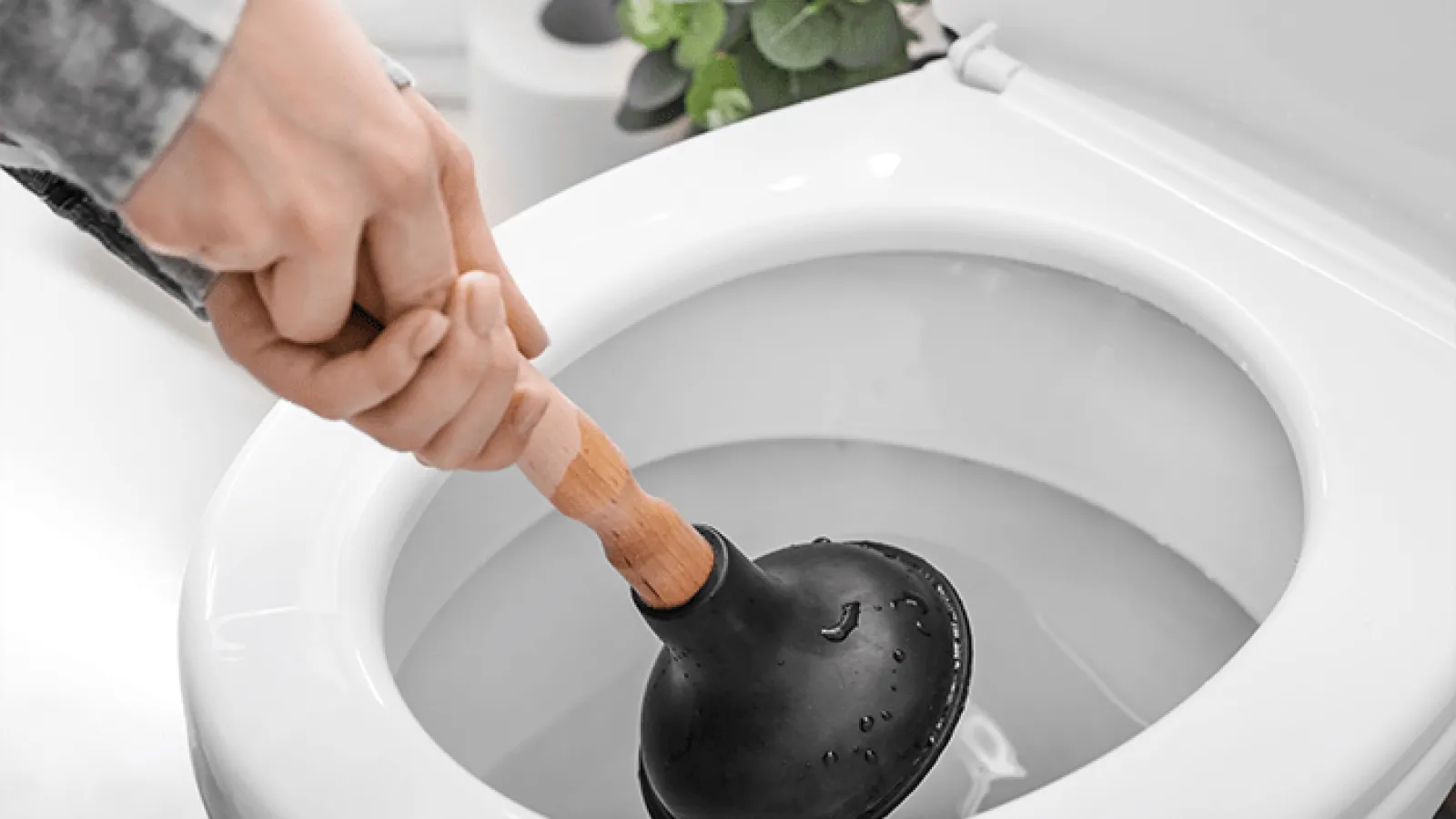A clogged toilet is one of those household inconveniences that can catch us off guard, and it becomes even more challenging when it starts to overflow. The panic sets in, especially if you don’t have a plunger at your disposal. However, fear not, as there are alternative methods using common household items that can help you unclog your toilet without creating a messy situation. In this comprehensive guide, we’ll delve into two effective methods, each using a combination of hot water, dish soap, baking soda, and vinegar. Follow the step-by-step outlines below to navigate through this common household predicament with ease.
Hot Water and Dish Soap
Gather Supplies:
Hot water (not boiling)
Dish soap
Rubber gloves
Bucket or container
Safety First:
Put on rubber gloves to protect your hands.
If the water level is very high, use a bucket or container to remove excess water. This initial step helps create a safer working environment.
Add Dish Soap:
Pour a generous amount (about half a cup) of dish soap into the toilet bowl. The soap acts as a lubricant and helps break down the clog.
Pour Hot Water:
Heat water until it’s hot but not boiling.
Carefully pour the hot water into the toilet bowl from waist height. Pouring from a height can add force to the water, aiding in the dissolution and dislodgment of the clog.
Wait and Flush:
Let the soapy hot water sit in the bowl for 10-15 minutes.
Attempt to flush the toilet. The combination of soap and hot water should work together to dislodge the clog.
Repeat if Necessary:
If the toilet is still clogged, repeat the process. Persistence is key.
Baking Soda and Vinegar
Gather Supplies:
Baking soda
Vinegar
Hot water
Rubber gloves
Bucket or container
Safety First:
Put on rubber gloves to protect your hands.
Remove excess water using a bucket or container if necessary.
Add Baking Soda:
Pour one cup of baking soda into the toilet bowl. Baking soda is a natural abrasive that helps break down the clog.
Pour Vinegar:
Pour one cup of vinegar into the bowl. The chemical reaction between baking soda and vinegar creates fizz, which aids in breaking down the clog.
Wait and Add Hot Water:
Allow the baking soda and vinegar mixture to work for about 10-15 minutes.
Carefully pour hot water into the bowl from waist height. The hot water adds extra force to dislodge the clog.
Attempt to Flush:
Try flushing the toilet. The combination of baking soda, vinegar, and hot water should help unclog the toilet.
Repeat if Necessary:
If the toilet remains clogged, don’t be disheartened. Repeat the process to ensure the clog is thoroughly addressed.
FAQs:
Q1: Can I use boiling water instead of hot water in these methods?
A: It’s not recommended to use boiling water, as it may crack the porcelain. Use hot water to avoid any potential damage.
Q2: How much dish soap or baking soda should I use?
A: Use about half a cup of dish soap and one cup of baking soda for effective results.
Q3: What if the toilet is still clogged after trying both methods?
A: If the clog persists, it’s advisable to seek professional plumbing assistance.
Conclusion:
Unclogging a toilet without a plunger might seem like a daunting task, but with the right approach and a bit of patience, you can effectively tackle the issue. By using everyday items found in your home, such as hot water, dish soap, baking soda, and vinegar, you can navigate through this common household woe without the need for specialized tools. Remember to prioritize safety, wear protective gear, and exercise caution throughout the process. If these DIY methods don’t yield success, don’t hesitate to contact a professional plumber to address the issue promptly. With these techniques in your arsenal, you’ll be equipped to handle toilet clogs and overflows with confidence.

A group of home improvement enthusiasts and bathroom design experts, combines in-depth knowledge and a shared passion to deliver engaging, informative content that guides readers through the world of bathroom innovation and style.

Leave a Reply